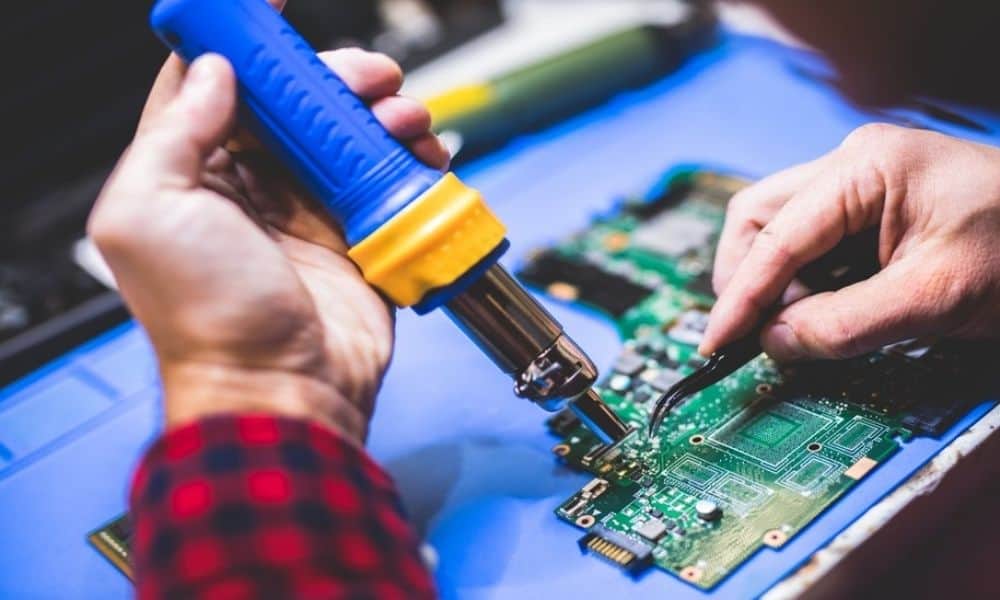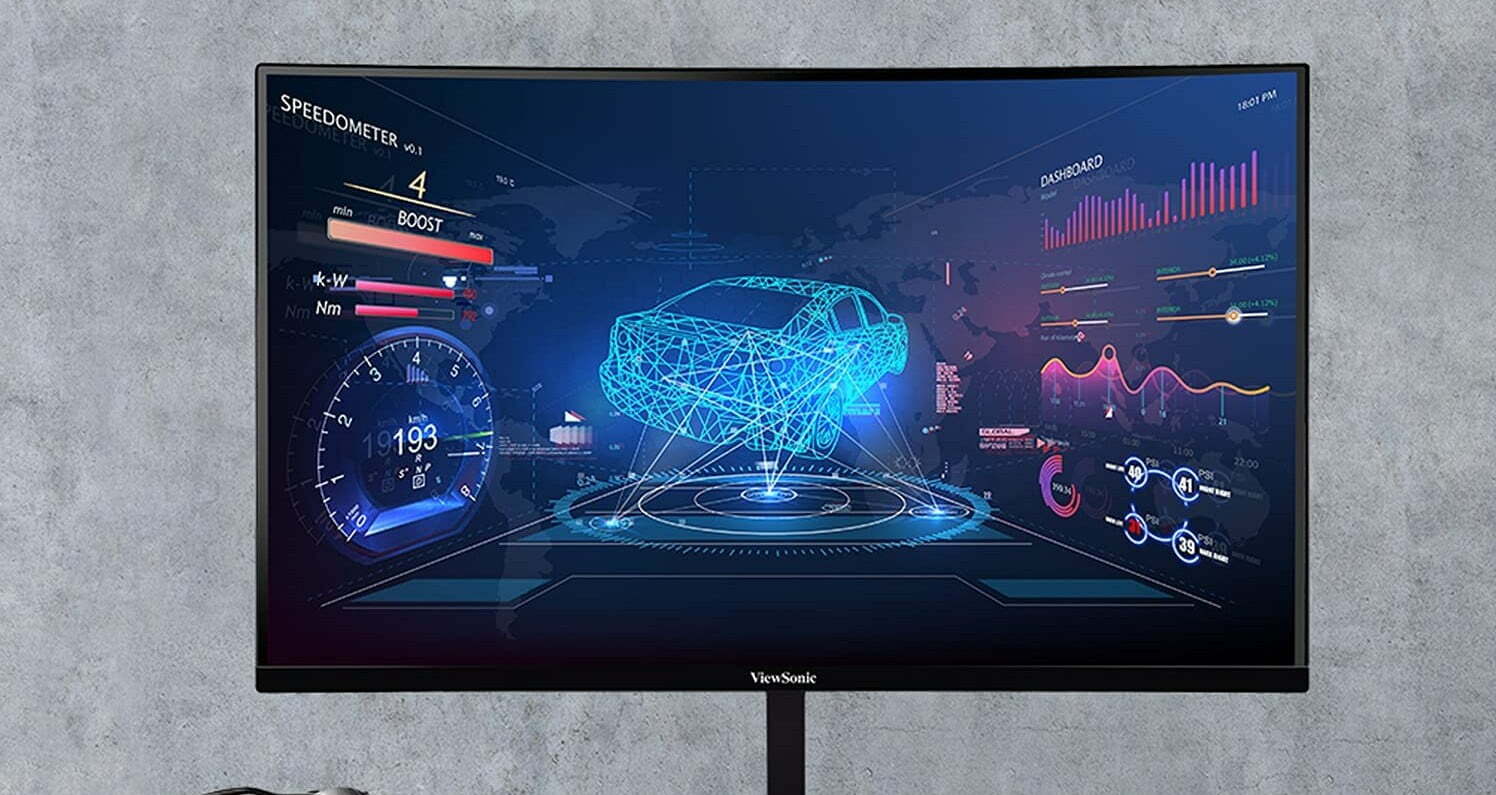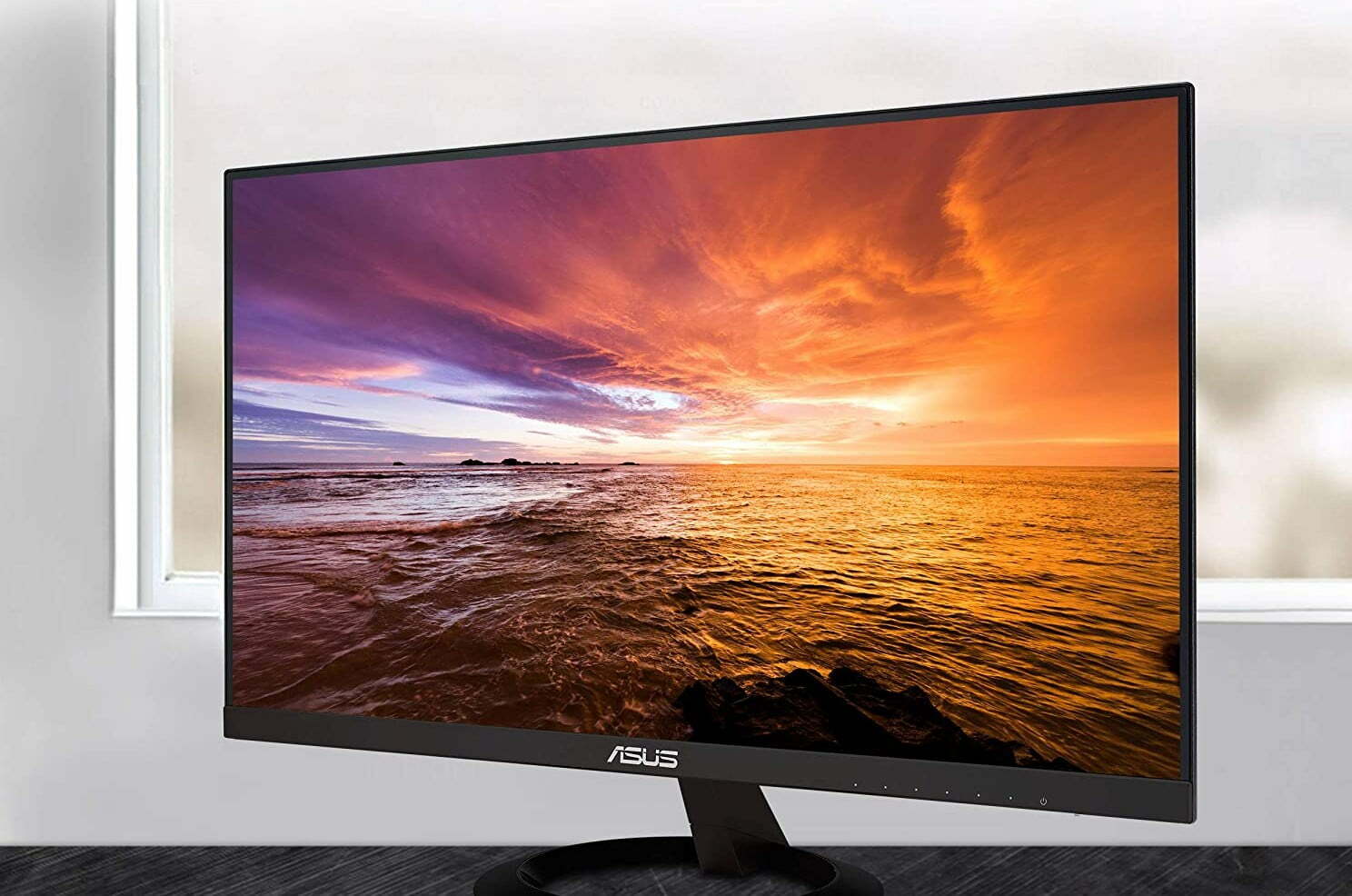Some of the most common computer monitor problems include blank screens, the monitor not turning on, and images being displayed in the wrong size or blurry. This happens even if you have a high-end monitor for your Macbook Pro or PC. Luckily, there are several easy steps you can take to troubleshoot these and other issues that will generally solve the problem.
Key Takeaways:
- The most common cause of monitor problems is in the connections.
- Adjusting display settings can fix images appearing improperly.
- Some monitors require software to function properly.
Troubleshooting Common Monitor Problems
1. Restart Monitor
Restarting your electronics is always the best place to start when troubleshooting a problem. If there is an issue with your favorite computer monitor, turn it off completely and then back on again. Most displays have a power indicator light that will light up when it is on. If this light does not turn on after pressing the on/off button, your display is either dead or is not receiving power. If your display does turn on but is still experiencing issues, go through the same reboot process with the computer you’re connecting it to.
Tip: Restarting your electronics is always the best place to start when troubleshooting a problem
Warning: If this light does not turn on after pressing the on/off button, your display is either dead or is not receiving power
- Related Post: Steps to Take When Your Computer Monitor Won’t Turn On
2. Check Connections
The next step in fixing any screen and operational issues with your display is to check all of your connections. You want to make sure that the electrical cable and the computer connection cable are both securely in place. The easiest way to do this is to unplug the display from the power source and from the monitor completely. Do the same with the cord to the computer. Then, resecure both cords tightly in the correct input ports.
Tip: You want to make sure that the electrical cable and the computer connection cable are both securely in place
3. Inspect For Physical Damage
If problems persist, check the screen, wires, and inputs for any signs of physical damage. For the display, look for any cracks in the body of the monitor or the screen. When inspecting the cables, look for any crimps in the wire, cuts, or fraying. Check the corresponding inputs to make sure that they aren’t loose or damaged.
Consequently, if there’s physical damage present your warranty should cover it. If you don’t have one yet, you’ll need to decide if the Asurion Amazon protection plan is worth it.
4. Adjust Settings
If images on your display appear but are the wrong size or blurry, you should go into your computer’s display settings to make adjustments. If your desktop image is either too small or too big for the monitor size, adjust the display’s resolution settings until you get a clear picture that fits the full size of your display. Here, you can also make sure that the computer is properly recognizing the monitor.
Tip: If images on your display appear but are the wrong size or blurry, you should go into your computer’s display settings to make adjustments
- Related Post: How to Fix Image Retention on a Computer Monitor
- Related Post: Why Does My Computer Screen Have Lines on it?
5. Install Updates
Some monitors require a driver installed on your computer to function properly. In some cases, installing or updating your monitor’s driver could solve connection and picture issues. To find out more about your display’s driver and download the latest version, go to the manufacturer’s website for your monitor and search for your display model. The user manual that came included with the screen should have instructions on proper driver installation as well.
Warning: Some monitors require a driver installed on your computer to function properly
Sources:
https://www.wikihow.com/Repair-LCD-Monitors
https://en.wikipedia.org/wiki/Computer_monitor
https://www.consumerreports.org/computer-monitors/how-to-choose-a-computer-monitor/
*https://www.youtube.com/watch?v=-rgXBl30srk
https://store.hp.com/us/en/tech-takes/top-3-ways-computer-screen-repair




































![Best 27 Inch Computer Monitor in [year] 27 Best 27 Inch Computer Monitor in 2026](https://www.gadgetreview.dev/wp-content/uploads/how-to-buy-the-best-computer-monitor.jpg)
![Best BenQ Monitors in [year] 28 Best BenQ Monitors in 2026](https://www.gadgetreview.dev/wp-content/uploads/best-benq-monitor-image.jpg)
![Best ASUS Monitors in [year] 29 Best ASUS Monitors in 2026](https://www.gadgetreview.dev/wp-content/uploads/best-asus-monitor-image.jpg)
![Best Dell Monitors in [year] 30 Best Dell Monitors in 2026](https://www.gadgetreview.dev/wp-content/uploads/best-dell-monitor-image.jpg)
![Best HP Monitors in [year] 31 Best HP Monitors in 2026](https://www.gadgetreview.dev/wp-content/uploads/best-hp-monitor-image.jpg)
![Best Lenovo Monitors in [year] 32 Best Lenovo Monitors in 2026](https://www.gadgetreview.dev/wp-content/uploads/best-lenovo-monitor-image.jpg)
![Best ViewSonic Monitors in [year] 33 Best ViewSonic Monitors in 2026](https://www.gadgetreview.dev/wp-content/uploads/best-viewsonic-monitor-image.jpg)
![Best Gigabyte Monitors in [year] 34 Best Gigabyte Monitors in 2026](https://www.gadgetreview.dev/wp-content/uploads/best-gigabyte-monitor-image.jpg)
![Best Monitors for PS4 Pro Gaming in [year] 35 Best Monitors for PS4 Pro Gaming in 2026](https://www.gadgetreview.dev/wp-content/uploads/best-monitors-for-ps4-pro-image.jpg)
![Best Monitor for Xbox Series X in [year] 36 Best Monitor for Xbox Series X in 2026](https://www.gadgetreview.dev/wp-content/uploads/best-monitor-for-xbox-series-x-image.jpg)
![Best Acer Monitors in [year] 37 Best Acer Monitors in 2026](https://www.gadgetreview.dev/wp-content/uploads/best-acer-monitor-image.jpg)
![Best MSI Monitors in [year] 38 Best MSI Monitors in 2026](https://www.gadgetreview.dev/wp-content/uploads/best-msi-monitor-image.jpg)
![Best SAMSUNG Monitors in [year] 39 Best SAMSUNG Monitors in 2026](https://www.gadgetreview.dev/wp-content/uploads/best-samsung-monitor-image.jpg)
![Best LG Monitors in [year] 40 Best LG Monitors in 2026](https://www.gadgetreview.dev/wp-content/uploads/best-lg-monitor-image.jpg)
![Best AOC Monitors in [year] 41 Best AOC Monitors in 2026](https://www.gadgetreview.dev/wp-content/uploads/best-aoc-monitor-image.jpg)
![Best Philips Monitors in [year] 42 Best Philips Monitors in 2026](https://www.gadgetreview.dev/wp-content/uploads/best-philips-monitors-image.jpg)
![Best Monitors For PUBG in [year] 43 Best Monitors For PUBG in 2026](https://www.gadgetreview.dev/wp-content/uploads/best-monitor-for-pubg-image.jpg)
![Best Stream Decks in [year] 44 Best Stream Decks in 2026](https://www.gadgetreview.dev/wp-content/uploads/best-stream-deck-image.jpg)
![Best Monitors for Streaming in [year] 45 Best Monitors for Streaming in 2026](https://www.gadgetreview.dev/wp-content/uploads/best-monitor-for-streaming-image.jpg)
![Best Monitors For Flight Simulator in [year] 46 Best Monitors For Flight Simulator in 2026](https://www.gadgetreview.dev/wp-content/uploads/best-monitor-for-flight-simulator-image.jpg)




















